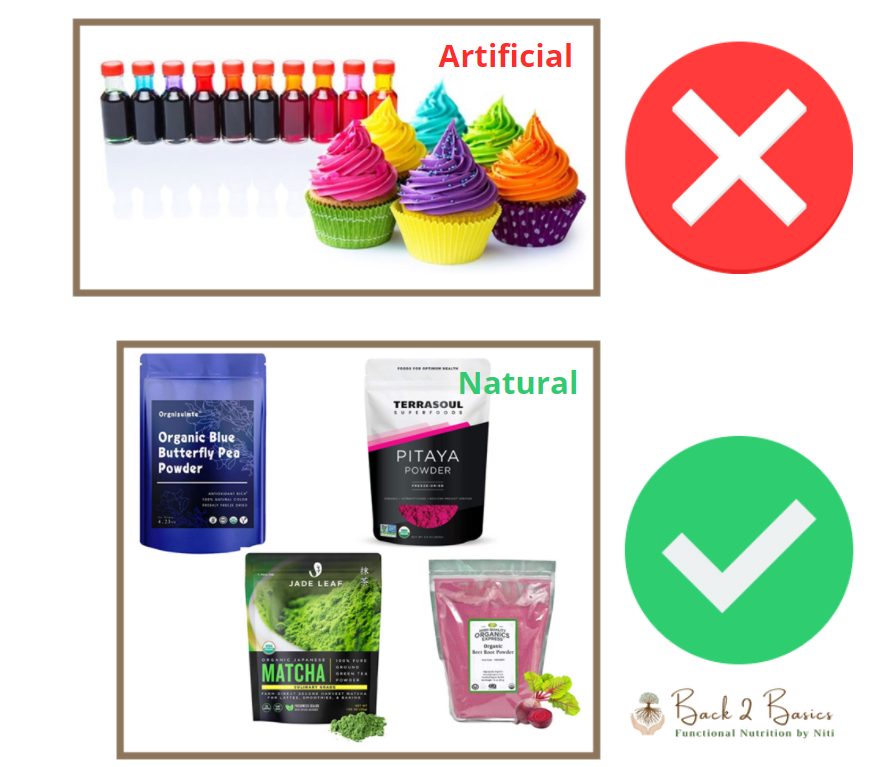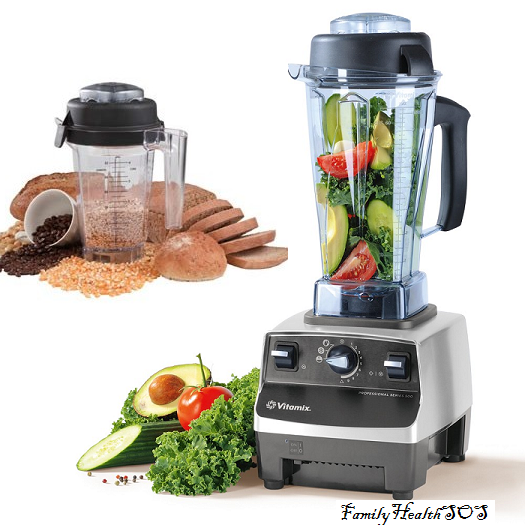Have you seen a little girl suck on a lollipop and her tongue turning blue, or have you been to a birthday party where the cake is covered with a dark blue or purple icing? Or it is St. Patrick’s Day and you would have seen green color added to your drinks or your kids sipping on their blue or red-colored Gatorade during their sports events. Unfortunately, these artificial food colors are all around us and that bothers me. This post is an attempt to explain the unknown negative effects of these seemingly small additives and healthier options that we can choose instead.
Do artificial colors & artificial dyes have any nutritional value?
Artificial colors & artificial dyes have no nutritional value. We all know that!
We also know that most foods with those artificial colors (cakes, candies, drinks, sports drinks, snacks, etc.) are unhealthy and ultra-processed. And most of these sources make their way to our kid’s plates contributing to negative effects on the health of our next generation.
Allowing these artificial colors & artificial dyes to be a part of our family’s diet and lifestyle is surely a cause of concern as they have negative nutritional value.
Why are people reacting to foods they earlier did not react to?
Let’s visualize a scenario where Lily enjoys a slice of all-purpose flour cake her mom made at home with no icing and has NO reaction. The following week, Lily eats a red velvet cake at a party also made with all-purpose flour and breaks out into a rash.
Some people will notice that they now react to a food that they were not reacting to earlier and have no idea that it is not the cake but the red color in it that could be the potential culprit.
People reacting to foods they were able to digest earlier could be a sign of delayed food reaction also known as food sensitivities. There are many reasons for a rise in food sensitivities that we are seeing globally ranging from environmental to dietary to gut-related. And one of the reasons for the rise is artificial colors & artificial dyes which are 100% not necessary.
What happens when you combine all-purpose flour/protein with an artificial blue or red color?
When you combine the flour with artificial colors & artificial dyes it causes the protein in the flour to change its structure. And when that protein structure changes, enzymes in our body cannot break it down effectively. The faster our digestive system can break down proteins, the less reactive that protein becomes. The incompletely digested food proteins remain in our circulatory system and are the reason for the reaction. However, the true culprit is hiding in plain sight: the red food coloring.
What can I substitute artificial colors & artificial dyes with?
We can trade in the artificial colors & artificial dyes in our pantry for natural plant-based powders. You can substitute pink for pitaya powder made from dragon fruit skin, blue for butterfly pea flower powder, purple for beetroot powder, and green for matcha tea to name a few. Not only are these natural substitutes beautiful in color, but they are also rich in antioxidants, fiber, and phytonutrients bringing superior health benefits: a win-win!
My favorite pink natural food color is made from dragon fruit skin https://www.amazon.com/gp/product/B07NBTG15K/ref=ppx_yo_dt_b_search_asin_title?ie=UTF8&psc=1
Another good sampler option for different colors is https://suncorefoods.com/products/sampler-bundle?variant=39250990891095
What are Phytonutrients?
Phytonutrients are natural compounds/pigments found in plant foods such as vegetables, fruit, whole grain products, and legumes. And these different pigments give plant-based foods their unique color.
If Protein, Fat, and Carbs are the 3 musketeers we all know and talk about, then Phytonutrients are the underdogs. Phytonutrients in different colored plants are linked to higher levels of specific nutrients and health benefits.
Call to action:
From time to time you might have heard of studies that link artificial colors & artificial dyes to hyperactivity, ADHD, behavioral changes, irritability, anxiety, depression, and the list can go on and on. Nevertheless, there is not enough evidence to support that everyone should be avoiding artificial food colors/ food dyes at all times. And so these culprits are being used widely. My hope is that if we stop buying them, stores will stop selling them.
Let’s all take the next step to a healthier tomorrow by cleaning out our pantry of these artificial colors & artificial dyes and embracing the rainbow colors in fruits and vegetables.
Related Articles:







